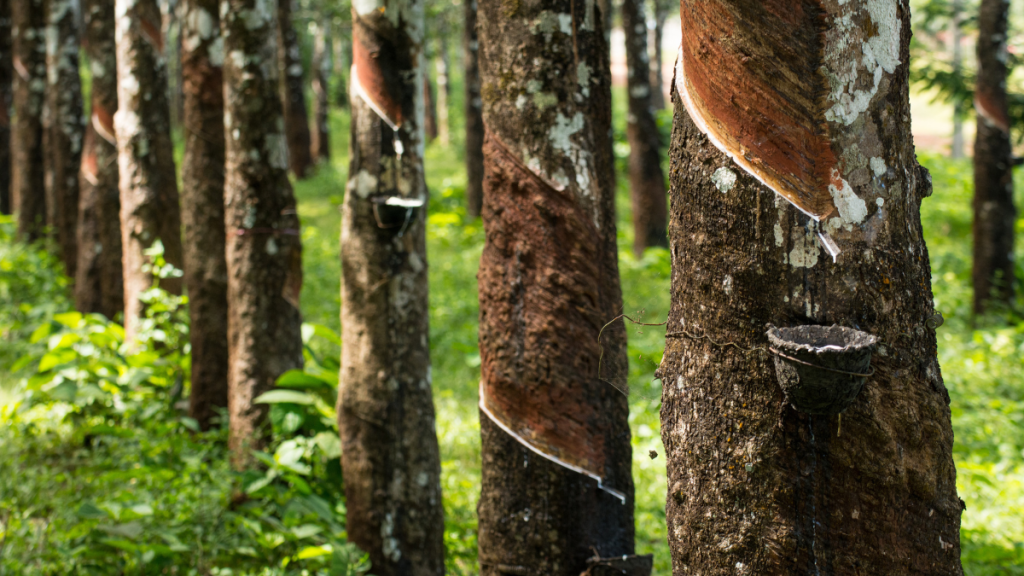KUALA LUMPUR, 2 April 2025 – Malaysia’s natural rubber industry, a cornerstone of its agri-commodity sector, is facing renewed scrutiny as recent figures reveal a contraction in output, even as global demand continues to climb. The conflicting trend of supply tightening and rising consumption has raised red flags across industry circles, sparking concern about long-term sustainability, competitiveness, and Malaysia’s standing in the global rubber market.
The Department of Statistics Malaysia (DOSM) reported that natural rubber production in December 2024 fell by 5.1%, dropping from 40,341 tonnes in November to 38,299 tonnes. While this decline was seasonal and partly expected, it underscores deeper issues confronting Malaysia’s once-dominant rubber sector.

At the same time, year-on-year production figures for 2024 were up by 26.2%, indicating some recovery from pandemic-era lows. However, industry observers argue that this recovery is fragile and not structurally supported for long-term resilience.
Global Demand Surges, Supply Lags Behind
According to international projections, global natural rubber demand is expected to reach 15.6 million tonnes in 2025, a 1.8% increase year-over-year. In contrast, global production is projected to rise by only 0.3% to 14.9 million tonnes, creating a shortfall that could pressure prices and disrupt global supply chains.
Malaysia, as the sixth-largest natural rubber producer, has long played a vital role in global markets—especially in high-quality latex and specialty rubber used in medical, automotive, and industrial sectors.
“We are witnessing a classic supply-demand imbalance. The global market is hungry for natural rubber, but Malaysia is struggling to maintain consistent output due to structural challenges,” said an analyst from the Malaysian Rubber Board (MRB).
Structural Weaknesses and Environmental Pressures
Among the primary culprits for the contraction are:
- Climate variability: The lingering effects of El Niño have resulted in erratic rainfall patterns, reduced latex flow, and stressed plantation yields.
- Disease outbreaks: Rubber leaf fall diseases and fungal infections have damaged thousands of hectares, particularly in states like Perak and Kelantan.
- Aging plantations and workforce: Many estates are operating with overaged rubber trees and a shrinking pool of skilled tappers, further reducing productivity.
- Commodity pricing fluctuations: Low and unstable prices over recent years have discouraged replanting and modernization, pushing smallholders toward more profitable crops like palm oil.
These interlinked issues continue to erode Malaysia’s competitiveness, especially against regional rivals like Thailand, Vietnam, and Indonesia.
Strategic Concerns and Economic Implications
The downstream impact of declining rubber output is significant. Malaysia is a major global exporter of:
- Rubber gloves and medical equipment
- Automotive components
- Industrial and specialty rubber-based goods
Any sustained dip in raw material supply will strain manufacturing costs, reduce export competitiveness, and potentially trigger job losses in value-added sectors.
“Rubber is not just a commodity—it underpins critical export industries. If we don’t address upstream vulnerabilities, we risk endangering entire supply chains,” cautioned a representative from the Malaysian Rubber Council (MRC).
Calls for Innovation and Policy Reform
To reverse the trend, industry leaders are calling for a comprehensive national rubber revitalization strategy, focusing on:
- Replanting with high-yield, disease-resistant clones
- Mechanization and automation of latex tapping
- Enhanced R&D for climate-resilient plantation techniques
- Incentivizing young agropreneurs to enter the sector
Moreover, stakeholders are urging the government to increase funding for smallholder training, improve access to credit, and create synergies between upstream producers and downstream manufacturers.
Opportunities Amid Crisis
Despite the challenges, the global supply gap offers Malaysia a chance to reclaim lost ground. Countries like China and India—two of the world’s largest rubber consumers—are actively seeking alternative supply sources due to geopolitical tensions and climate risks in other regions.
This positions Malaysia as a potential stabilizing force in the global natural rubber market, provided it can overcome domestic bottlenecks.
“If we act fast, the supply gap can be turned into a market opportunity. But the window is closing quickly,” noted an economist from Bank Negara Malaysia’s commodity unit.
Time for Strategic Recalibration
Malaysia’s rubber industry stands at a critical juncture. The current mismatch between supply contraction and global demand growth is a warning sign that short-term gains in output may not translate into long-term resilience without targeted reform.
As the world looks for reliable, sustainable rubber suppliers, Malaysia has both the heritage and infrastructure to lead—but it must modernize and innovate to remain relevant.
For ongoing analysis on Malaysia’s commodity sectors and agri-based economic policies, stay tuned to ForwardMalaysia.my.